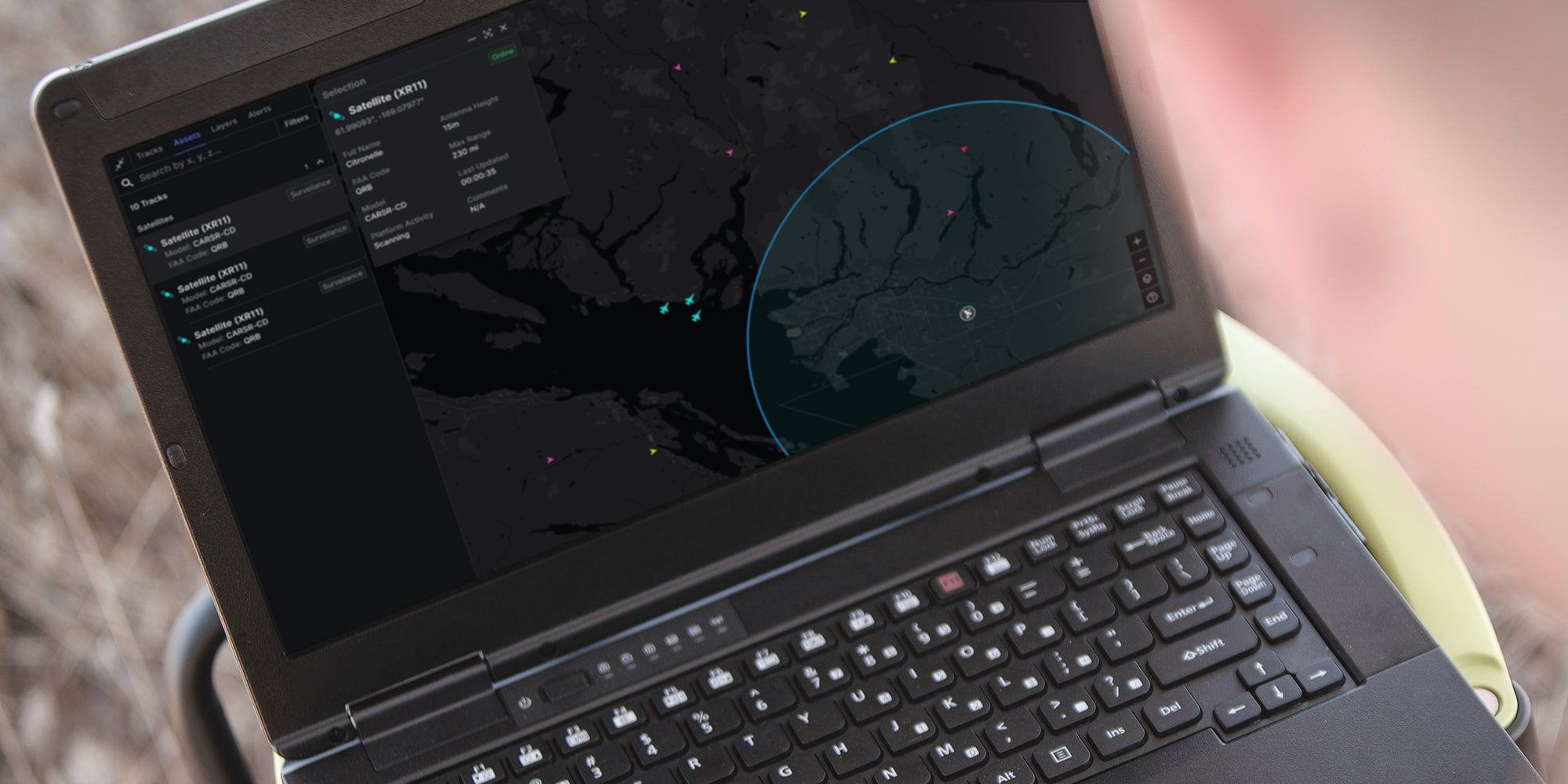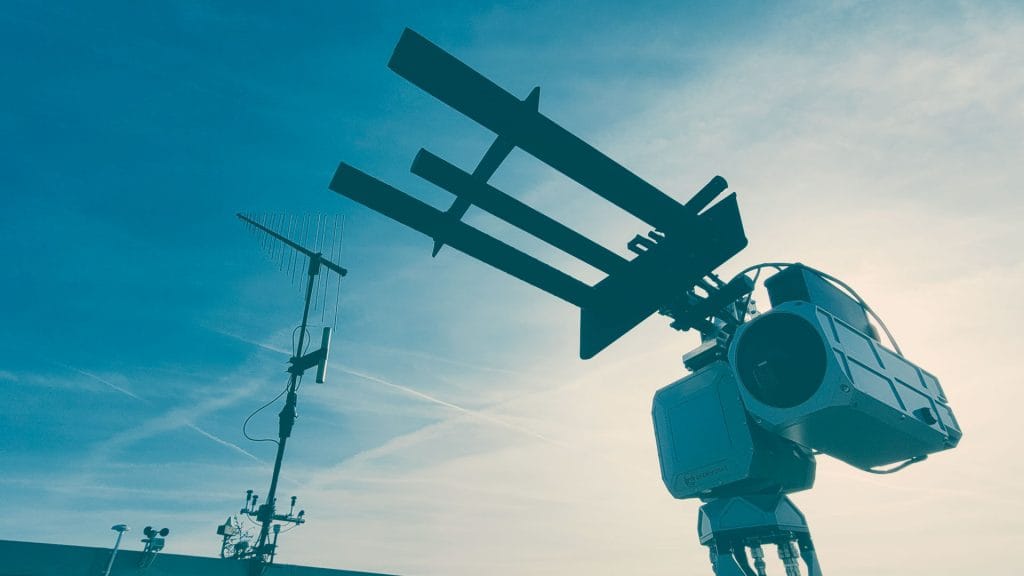AI-Driven EO/IR Systems: The Future of cUAS Defense
Explore EO/IR systems that use AI for cUAS to revolutionize defense against unmanned aerial threats, enhancing detection and response capabilities.
In today's rapidly evolving world of aerial threats and counter-defence, the technologies we deploy to secure our skies have become more sophisticated than ever. With the increasing prevalence of unmanned aerial systems (UAS) and their potential threats, the integration of artificial intelligence (AI) in Electro-Optical/Infra-Red (EO/IR) systems has emerged as a game-changer. These advanced systems promise to elevate our defense mechanisms against UAS threats, forming a crucial backbone in modern counter unmanned aerial systems (cUAS) strategies.
EO/IR Systems that Use AI for cUAS
EO/IR systems equipped with AI present a transformative approach to dealing with aerial threats. By leveraging sophisticated algorithms, these systems are capable of optical detection, acquisition, classification, and continuous tracking of potential UAS threats. Unlike traditional systems, this AI-driven technology enables quick adaptation to dynamic environments, ensuring that real-time alerts and responses are more effective and precise.
For a broader understanding of advancements in unmanned systems, explore the collaboration between Rheinmetall and Anduril in developing advanced counter-UAS systems here.

Features of EO/IR Systems
At the core of EO/IR systems is the ability to perform optical detection and the acquisition of UAS threats. These systems are designed to accurately identify unauthorized aerial entities using their unique electromagnetic signatures. The integration of AI further enhances these capabilities by facilitating the classification and tracking of multiple threats simultaneously, providing operators with a comprehensive view of their airspace.
For an in-depth look into military EO/IR innovations, refer to the advancements in Northrop Grumman's Litening Targeting Pod here.
Advantages of AI in EO/IR Systems
The AI enhancements in these systems offer numerous benefits. First and foremost is the real-time threat detection capability. By continuously analyzing airspace data, these systems can rapidly identify and alert operators to potential threats, significantly reducing response times. Moreover, AI-driven EO/IR systems exhibit enhanced accuracy and reliability, minimizing false positives and ensuring that legitimate threats are swiftly and effectively managed.
For insights on how AI is shaping broader military applications, explore how AI-generated infrared images are utilized in defense here.
Real-World Applications and Platforms
Real-world examples of EO/IR systems in action abound, providing valuable lessons and insights for future implementations. From military deployments to border security incidents, these technologies have demonstrated their reliability and effectiveness in various scenarios, consistently proving their worth in safeguarding airspace integrity.
Vision Flex CUAS by OpenWorks Engineering
Vision Flex is a highly configurable optical system designed for both static and mobile applications. It utilizes embedded twin-AI modules for autonomous optical classification and tracking, effectively identifying and following dynamic aerial targets. The system supports HD daylight and medium wave infrared (MWIR) sensors, offering flexibility for various mission requirements.

For more on the system visit the Open Works Engineering website.
NiDAR by MARSS
NiDAR is an AI-powered command and control (C2) system that integrates multiple sensors, including EO/IR cameras, to detect, track, and respond to UAS threats. It employs AI for threat prioritization and provides autonomous recommendations for countermeasures, enhancing decision-making speed and accuracy.

For more on the system visit the MARSS website
SkyTracker® Technology Suite by CACI
SkyTracker is a comprehensive cUAS solution offering modular and scalable capabilities. It integrates various sensors, including EO/IR systems, enhanced with AI for precise detection, identification, tracking, and mitigation of UAS threats. The suite includes fixed-site, mobile, and on-the-move configurations to meet diverse operational needs.

For more on the system visit the Caci website
VAMPIRE by L3Harris
VAMPIRE is a vehicle-mounted cUAS system that incorporates AI-driven EO/IR sensors for detecting and engaging UAS threats. It features mission management software capable of integrating multiple sensor feeds into a unified display, enhancing situational awareness and response effectiveness.

For more on the system visit the L3Harris Technologies website.
AirScout Sentry by Walaris
The AirScout Sentry system leverages EO/IR technology and AI-driven software to enable optical detection, acquisition, classification, and tracking of UAS. Its AI capabilities provide continuous airspace monitoring, detecting UAS threats and delivering real-time alerts to operators. Designed with flexibility in mind, AirScout Sentry utilizes commercial off-the-shelf cameras and is customized to meet specific airspace coverage needs.

For more on the system visit the Walaris homepage.
The Role of AI in cUAS
AI not only aids in the detection of UAS threats but also enables automated threat responses. Once a potential threat is identified, AI systems can autonomously engage countermeasures or notify human operators to take action. This level of automation promotes continuous airspace monitoring without the need for constant human supervision, allowing for a more robust and efficient defense setup.
Application of EO/IR Systems in Defense
In military operations, the application of EO/IR systems that use AI for cUAS is particularly vital. They provide armed forces with the necessary tools to secure bases and operational zones from unauthorized UAS intrusions. Additionally, these systems are instrumental in border security, where they assist in the detection and deterrence of illicit border crossings by UAVs, ensuring national security on a broader scale.
Commercial Use Cases
Beyond defense, commercial sectors also benefit from EO/IR systems. Critical infrastructure such as power plants and communication networks often rely on these technologies to prevent espionage or terrorist threats from drones. Furthermore, event security organizations employ these systems to safeguard large gatherings, thereby ensuring public safety against potential aerial disruptions.
Technological Innovations
The field of EO/IR systems is in a state of continuous evolution, driven by advancements in AI algorithms and software applications. Researchers are consistently developing more efficient processing methods to enhance system response times. On the hardware side, innovations are focusing on improving sensor quality and system integration, leading to more reliable and durable cUAS solutions. Technological innovations in EO/IR systems include:
- AI Enhancements: Advanced algorithms for real-time target identification, anomaly detection, and autonomous threat prioritization.
- Image Processing: High-speed chips, noise reduction, and multi-spectral imaging for clearer and faster analysis.
- Sensor Advancements: Ultra-sensitive, miniaturized, and quantum sensors for improved accuracy and performance.
- System Integration: Modular, networked systems integrated with radar and other technologies for comprehensive situational awareness.
- Durability: Robust materials, shock-absorbing designs, and self-healing systems for reliability.
- Portability: Energy-efficient, compact designs for longer operation and easy deployment.
Challenges and Limitations
Despite their capabilities, EO/IR systems face several challenges. Technologically, the rapid advancement of drone technology requires constant updates and adaptations to EO/IR systems. Ethical and legal concerns also arise, particularly around privacy and the potential misuse of autonomous systems. Navigating these challenges is crucial for gaining public trust and ensuring ethical compliance.
Future Prospects for EO/IR Systems
Looking ahead, the future of EO/IR systems in the cUAS landscape is promising. Emerging trends point towards greater integration with other technologies, such as radar and electronic warfare systems, to create a multi-layered defense strategy. As AI technology evolves, these systems are expected to become even more efficient and versatile, cementing their role as critical components in both public and private security infrastructures.
FAQs
What exactly are EO/IR systems that use AI for cUAS?
EO/IR systems equipped with AI are advanced surveillance technologies designed to detect, identify, and neutralize unmanned aerial threats. They use optical and infrared sensors combined with AI algorithms to monitor and secure airspace effectively.
How do AI-driven EO/IR systems improve threat detection?
By utilizing AI algorithms, these systems can quickly analyze vast amounts of data, identifying patterns and anomalies that human operators might miss. This capability ensures quicker detection and more accurate identification of UAS threats.
What are the main applications of EO/IR systems in defense?
These systems are primarily utilized in military and border security operations to detect and prevent unauthorized UAS intrusions. They are also vital in safeguarding critical infrastructure from potential aerial threats.
Are there any limitations to the use of EO/IR systems?
While highly effective, these systems face challenges such as rapidly evolving drone technologies, as well as ethical and privacy concerns surrounding surveillance and automation. Continuous updates and ethical considerations are necessary to address these issues.
How does AI contribute to the continuous monitoring of airspace?
AI allows EO/IR systems to operate autonomously, reducing the need for human intervention. This capability ensures constant monitoring and quicker response times in the event of a detected threat.
What is the future potential of EO/IR systems?
With ongoing technological advancements, EO/IR systems are expected to become even more integral in security infrastructures. Future developments will likely focus on enhancing integration with other technologies for more comprehensive cUAS defense strategies.
Conclusion
EO/IR systems that use AI for cUAS represent a significant leap forward in our ability to detect and respond to aerial threats. By combining cutting-edge technology with intelligent automation, these systems ensure that our skies remain secure and our airspace is vigilantly monitored. As technologies continue to advance, the role of EO/IR systems will undoubtedly expand, paving the way for more robust and effective defenses in both military and commercial sectors.








